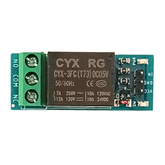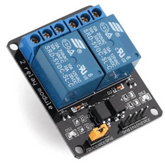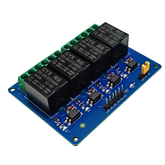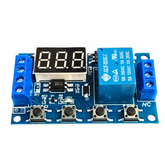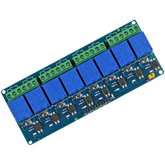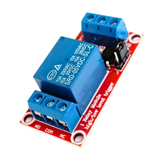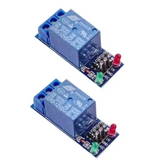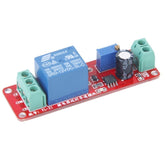Applications of Relays in Electronics
Summary
Discover the versatile world of relays in electronics with our blog, "Applications of Relays in Electronics." Dive into the introduction of relays, exploring their pivotal role in home automation, safety implementations with circuit breakers, and their significance in electronic circuits. Uncover the magic of relays in telecommunication devices, automotive electrical systems, and power supply switching functions. Learn how relays amplify signals, ensure protective measures in electronics, and witness their dynamic applications. From enhancing signal routing to powering the automotive industry, this blog unravels the indispensable role of relays in modern electronics. Don't miss the electrifying conclusion that ties it all together! Click now to enlighten your electronic journey.
Introduction
In the realm of electronics, relays serve as critical components for controlling circuits. These versatile devices enable low power signals to switch on or off higher-powered circuits without direct contact. From everyday appliances like refrigerators and washing machines to sophisticated satellite systems, relays are paramount in ensuring operational safety and efficiency.
They play a vital role in automating processes, protecting electronic equipment from overloads, and form an essential part of control logic in a vast array of electronic applications – truly indispensable tools within the industry's arsenal.
Also, read our blog on What is a Relay detailing how it works, relay contact types, and different types of relays and their application.
Relays in Home Automation Systems
Relays are key in home automation, handling switching and protection. They work by opening or closing contacts when they detect voltage or current changes.
Single-throw types link one point per switch to complete circuits—a go-to for managing two paths at once. Working principles matter too; with a movable contact plus an electromagnetic coil inside them. Power up the coil?

Magnetic fields pull this contact into action—it's how signals move! When you cut power, springs push back to start positions again. For AC use versus DC tasks like mine: pay attention to coils' make-up—you'll see diodes around DC ones that fend off reverse currents post-deactivation.
Remembering these points ensures wise relay selection in any electronic setup—vital as we control more through smart systems today.
Discover everything you need to know about Relay.
Safety Implementations with Circuit Breakers
Circuit breakers serve as guards in our electronic devices. They watch for trouble like high current that can harm circuits. When too much electricity flows, these circuit breakers act fast.
They cut the power to keep everything safe. For example, your home wiring system or big machines at factories. These clever tools sense danger before we do and shut things down before wires get hot and start fires.
Relays play important role by not just stopping damage but also saving lives by preventing electrical fires from starting out of sight within walls or equipment.
Role of relays in electronic circuits
In electronic circuits, relays serve as crucial switches. They control power flow using electromagnets to pull contacts together or push them apart. This lets us turn on devices without touching them directly; we can be yards away and it still works!

These clever tools help in making large currents safe too. By allowing a small current to direct a much larger one, they keep our gadgets from harm's way - think household appliances that need good care with electricity. Moreover, since relays can handle high-voltage tasks while being controlled by low-voltage signals, they're key for safety reasons – you wouldn't want a weak signal causing an accident!
Plus, these components are long-lasting because there’s no spark when the relay operates remember this helps cut down wear over time. So really it's about guiding power safely where it needs to go and protecting both people and their tech gear alike.
Utilizing Relays in Telecommunication Devices
In telecom devices, we use relays to manage high current flow. Think of a power relay as a kind of switch; it can have NO or NC contacts. A small electric pulse starts the whole thing—activating an electromagnet that pulls in an armature and changes contact positions.
With NO contacts, when you turn on the input circuit, electricity flows through this coil creating magnetism. This draws in the armature so two ends meet—letting much larger currents pass for your device to work. Cut off that initial trigger?
The spring snaps back into place causing these very parts to part ways—the path breaks and stops any further large-scale electronic dance. NC is just flipped upside down: normally closed means generally 'on', but add some energy here too and voila! It switches off by separating those once snugly fitted pieces against our trusty little spring's pushback.
Now why bother with all this clicking mechanism at play? It simplifies control over powerful electrical currents for experts. Finder offers solutions for loads from 12A to 50A, tailored to each application's needs.
Automotive Electrical System Integration
In cars, everything electrical talks through a network. It's like the body's nerves but for your ride. Let’s break it down: The brain here is the control unit; it sends signals out to get things done—like starting the engine or lighting up your dash.
Wires carry these commands all over, just under the surface. Integration means making sure parts work together as one—think of each wire and switch needing to play nice with others. Take headlights: they need power from the battery, switches to turn on and off, relays that handle high currents—all working in sync so you can see at night.
I keep track of how much electricity goes where—it has got to be just right—or else! So my job keeps your car running smooth without any hitches—the lights go on when needed; wipers wipe away rain exactly when you want them too—and silently I make sure nothing gets crossed because if wires mess up. Well let's not go there!
Power Supply Switching Functions
In electronics, we often use relays to manage power supply switching. A relay is like a switch that opens or closes when it gets an electric signal. This lets us control the flow of current without touching the circuit directly. Think about those times you don't want too much juice in one place, or none at all – that's where I'd use a relay.

These switches work great for devices with differing needs; some moments they need more power and other times less. By using relays smartly, devices last longer because there's no unnecessary stress on their parts from constant high power levels.
Also big plus - these little guys help save energy! Since they can be precise with how much electricity goes where in our gadgets and machines, nothing gets wasted. With technology always getting better, today’s relays are quicker than ever while being tough enough to handle lots of off-and-on action over their life span.
Signal Amplification and Routing
Relays are switches that we control from far away. In old computers, they were key for logic tasks. Signal relays, a kind of relay, play a big role in how we talk over distances today. They use magnets to move parts inside and change the way current flows with just a small signal's touch—a real David versus Goliath story! Unlike power relays handling bigger loads—signal relays deal with tiny voltages and currents below 2 amps.
Think of them like special agents designed not to mess up weak signals in sound or video lines where precision is king. Quick on their feet; these little helpers fit right onto circuit boards without hogging space or needing extra cooling tricks because they don't heat up much at all! While picking one out isn’t rocket science—you've got to match it well with your needs: voltage capacity? Check under 30 VDC; Switching load? Make sure it’s no more than 2 A.
We also mind if our switch should stand tall through holes in the board—or lay flat for surface jobs—and how many paths it'll flip between—all so things run smooth as silk when you give the command.
Protective Relay Usage in Electronics
Protective relays are vital in power networks. They help keep voltage and frequency stable when we bring new generators online. This is tough because it changes how current flows and can confuse our normal safety gear.
We now have a big task: fix the relay settings for this new setup. Experts suggest an approach tackling two main parts – pick the best pickup (PS) value first, then set the time delay switches (TDS). The goal? Make sure relays react fast under strict rules.

Some use advanced math models to find these values—the kind where things aren't fixed but change based on conditions like faults or usage patterns. One such model tweaks relay curves considering network ups and downs—a smart way of adapting as things shift around us. This job isn't easy since there's a lot at play—different aims, limits, lots of moving parts—but getting it right means less trouble from blackouts to equipment damage down the line.
Relays play a critical role in modern electronics, offering versatile functionality. They serve as essential components for automating circuits within telecommunication systems, automobiles, and home appliances.
Their ability to control large voltage loads with small input signals makes them invaluable for safety-related applications like circuit protection mechanisms and are instrumental in the smooth operation of medical equipment.
With their varied types—electromechanical to solid-state—designers find relays indispensable when creating systems that require reliable switching capabilities across an array of electronic devices and installations.
Conclusion:
Relays play a pivotal role across diverse electronic applications, showcasing their versatility and reliability. From enhancing home automation to ensuring safety through circuit breakers, amplifying signals, and even safeguarding automotive systems, relays are the unsung heroes of electronic innovation. Their seamless integration into telecommunication devices and power supply switching functions further underscores their importance. As we navigate the intricate world of electronics, it's clear that relays are the silent architects, orchestrating seamless connections and safeguarding systems. The relay's journey from circuitry to connectivity is not just fascinating; it's the invisible thread binding our electronic landscapes. Explore the power of relays, where every connection sparks a world of possibilities.
Please do check out other blog posts about Popular electronics
Make sure you check out our wide range of products and collections (we offer some exciting deals!)



